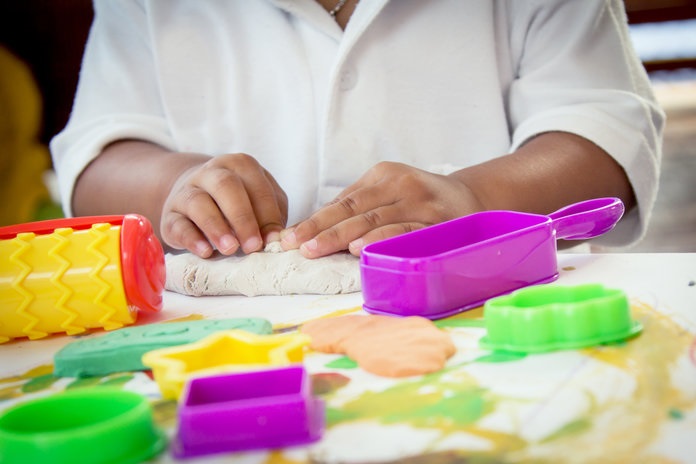This article originally appeared on SheKnows.
Play-Doh, Legos & dress-up help your kids grow in pretty cool ways
Ever hover outside your kids’ room, just to listen to their cheerful chatter? Watching your children discover the world via play is an often fascinating experience as a parent. As they navigate the world with uninhibited curiosity, sitting on the sidelines may inspire you to think more creatively too. But in addition to being a source of joy and a way to keep your kids entertained when you need to check off lines on your to-do list, specific toys and games provide scientific benefits to your child’s personal growth.
“Children explore their world and expand important developmental skills through play including language, communication, motor ability and emotional regulation. Play also provides opportunities for children to create, use active imagination and practice tolerating frustration and disappointment,” explains clinical psychologist and parenting expert, Dr. Stephanie O’Leary.
1. Tag develops gross motor skills
Amazed by your child’s endurance as they play the 100th session of tag with their sibling? It may wear you out just watching the twosome play, but O’Leary explains they’re building gross motor skills, like running and making swift changes in another direction. “These actions are fantastic for general health, but also serve to strengthen coordination, endurance and muscle strengths. Beyond motor skill development, games like tag require kids to think on their feet and learn from mistakes by adapting to use more successful strategies,” she explains.
2. Play-Doh develops fine motor strength
Sure, it might be a tad messy (and yep, you already have dried bits permanently buried in your favorite rug), but Play-Doh is a superstar toy for inspiring your little one’s imagination. O’Leary says this timeless molding pastime strengthens fine motor skills, which build motor endurance for the future. In other word, playing with Play-Doh encourages your child to write, paint or draw without getting fatigued or frustrated as they get older. “Play-Doh also allows for creative expression and helps children practice planning and sequencing skills if they choose to create more elaborate items,” says O’Leary.
3. Legos build goal-setting skills
While O’Leary says Legos are beneficial in teaching kids to practice their fine motor skills since snapping each piece together is a workout for mini muscles and minds, the real psychological benefit of Legos extends far beyond the playroom. “Building Lego according to plan allows children to practice using a methodical, step-by-step approach to achieve a goal,” she says. “And building with Lego in a less structured fashion helps develop creativity, practices planning skills by taking an idea and turning it into a tangible object and works toward mastery in terms of sorting skills.”
4. Puzzles help build visual-spatial planning ability
As your kid grows older, she may want to skip out on the building blocks and tackle the challenge of a puzzle. These one-dimensional toys are superstars for a number of developmental benefits. Finding which pieces connect requires fine motor skills and visual-spatial planning ability, teaching your child’s mind to work double-time. Then, separating pieces by color encourages sorting skills, as your brainiac figures out how to design the portrait. An overlooked perk, according to O’Leary, is the attitude lesson that puzzles teach. “Puzzles require a high degree of perseverance, especially as the number of pieces grows, thus helping children learn to work toward long-term goals despite minor setbacks,” she says.
5. Dolls enhance emotional awareness
Regardless of your child’s sex or gender, creating a land where Barbies or other dolls can exist helps enhance emotional awareness, explore concepts regarding interpersonal relationships and practice socially appropriate responses and interactions. Often, these dolls become some of your child’s favorite toys and they use them as a way to navigate ideas they may be trying to figure out. “Younger children will often personify inanimate objects, like making a family out of pretend fruits and vegetables, in order to explore topics of family interaction, caretaking, and responsibility,” explains O’Leary. This healthy practice can be beneficial and — if you listen in — really entertaining for adults!













